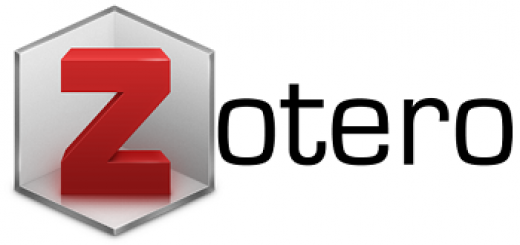 RAMUAN OBAT TRADISIONAL SUB-ETNIS BATAK KARO YANG DIPERJUALBELIKAN DI PASAR BERASTAGI DAN KABANJAHE SUMATERA UTARA
RAMUAN OBAT TRADISIONAL SUB-ETNIS BATAK KARO YANG DIPERJUALBELIKAN DI PASAR BERASTAGI DAN KABANJAHE SUMATERA UTARA
 = https://doi.org/10.26753/jikk.v15i2.293
= https://doi.org/10.26753/jikk.v15i2.293  Abstract views = 1692 times
|
Abstract views = 1692 times
|
Abstract
Research has been carried out on the ingredients of traditional Batak Karo medicine which are traded in the Berastagi and Kabanjahe traditional markets, North Sumatra. The study was conducted through an ethnobotany approach. The survey was conducted with free interviews, in-depth, semi-structured, and participatory observations to all traditional medicinal herb traders in the Berastagi and Kabanjahe traditional markets. The local name of the ingredients, benefits, form of packaging, plants, and how to use each ingredient is asked to the trader. In the Berastagi and Kabanjahe traditional markets sold 20 types of traditional medicinal which are divided into parem, tawar and minyak urut (oil for massage). The trader sell 12-18 types of concoctions. The medicinal ingredients are used for more curative purposes than preventive purposes. The traditional ingredients found in this study are classified into herbs because their properties are based on empirical experience only.
References
Achmad, S.J., Y.M. Syah, E.H. Hakim, L.D. Juliawaty, L. Makmur & D. Mujahidin. 2008. Ilmu kimia dan kegunaan tumbuh-tumbuhan obat Indonesia. Institut Teknologi Bandung, Bandung.
Adam, Z., M. Hamid, A. Ismail & S. Khamis. 2009. Effect of Ficus deltoidea extract on hepatic basal and insulin- stimulated glukose up-take. Journal of Biological Sciences 9(8): 796-803.
Alexiades, M.N. 1996. Colecting ethnobotanical data: an introduction to basic concepts and techniques. Dalam: Alexiades, M.N. 1996. Etnobotanical research: a field manual. Scientific Publication Departemen the New York Botanical Garden, Bronx, New York: 53-96.
Andayani, T. M., M.I.M. Ibrahim & A.H. Asdie. 2009. Pengaruh kombinasi terapi sulfonilurea, metformin, dan acarbose pada pasien diabetes mellitus tipe 2. Majalah Farmasi Indonesia 20(4): 224 -230.
Bangun, P., 2010. Culture Batak. In: Koentjaraningrat. Man and culture in Indonesia. Djambatan, Indonesia.
Chapman KR and N. Chomchalow. 2004. Production of medicinal plants in Asia in: Batugal, Pons A, Jayashree Kanniah, Lee Sok Young and Jeffrey T Oliver (eds). 2004. Medicinal Plants Research in Asia, Volume 1: The Framework and Project Workplans. International Plant Genetic Resources Institute – Regional Office for Asia, the Pacific and Oceania (IPGRI-APO), Serdang, Selangor DE, Malaysia. P.33-48.
Darusman, L.K., D. Iswantini, E. Djauhari & R. Heryanto. 2005. Ekstrak tabat barito berkhasiat anti tumor: kegunaan sebagai jamu, ekstrak terstandar dan bahan fitofarmaka. Laporan Kerja-sama IPB. httpt://bima.ac.id/-detail_invensi.php diakses 20 september 2016 jam 21.50.
de Padua, L.S., N. Bunyapraphatsara & R.H.M.J. Lemmens. (Editors). 1999. Plant resources of South-East Asia No 12(1). Medicinal and pousionous plants 1. Backhuys Publishers, Leiden, the Netherland: 711hlm.
Sangat, H.M. and I. Larashati. 2002. Some Ethnophytomedical Aspects And Conservation Strategy Of Several Medicinal Plants In Java, Indonesia. Biodiversitas 3(2): 231-235.
Sujarwo, W. A.P. Keim, V. Savo. PM Guarrera, G. Caneva. 2015. Ethnobotanical study of Loloh: Traditional herbal drinks from Bali (Indonesia). Journal of Ethnopharmacology 169: 34-48.
Tridjaja, I.N.O. 2013. Jamu: A Healthy Drink from Indonesia. Proceedings of AFHW 2013 International Symposium on Agri-Foods for Health and Wealth August 5-8, 2013, Golden Tulip Sovereign Hotel, Bangkok, Thailand: 55-60.
Riswan, S. and Sangat-Roemantoyo, H. 2002. Jamu as Traditional Medicine in Java, Indonesia. South pacific Study 23(1): 1-10.
Elfahmi, K. Ruslan, R. Bos, O.Kayser, H. J. Woerdenbag, W. J. Quax. 2015 Chapter 2 Jamu: The Indonesian traditional herbal medicine.
Hoang, V.S., P. Bas and P.A.J. Kebler. 2008. Traditional medicine plant in Ben En national park, Vietnam. Blumea 53: 569-601.
Martin, G.J. 1995. Ethnobotany a people and plants conservation manual. Chapman and Hall. London, UK: xi + 268hlm.
Munim, A. and E. Hanani. 2011. Fisioterapi dasar. Dian Rakyat. Jakarta: viii + 356hlm.
Mursito, B., K. Vasisht and V. Kumar. 2003. The status of medicinal and aromatic plant in Indonesia in: medicinal plant and their utilization. United National Development Organization and the International Centre for Science and High Technology, Trieste, Italy: 89--101.
Silalahi, M., 2014. The ethnomedicine of the medicinal plants in sub-ethnic batak north sumatra and the conservation perspective. Indonesia. PhD Thesis, University Indonesia of Biology Departement.
Silalahi, M., Nisyawati, Walujo, E.B., Supriatna, J., 2015a. Local knowledge of medicinal plants in sub-ethnic Batak Simalungun of North Sumatra, Indonesia, Biodiversitas 16(1): 44-54.
Silalahi, M, Nisyawati, Walujo, E.B., Supriatna, J., Mangunwardoyo, W., 2015b. The local knowledge of medicinal plants trader and diversity of medicinal plants in the Kabanjahe traditional market, North Sumatra, Indonesia. Journal of Ethnopharmacology 175, 432-443.
Sirisha, N., M.Sreenivasulu, K.Sangeeta, C.M. Chetty. 2010. Antioxidant Properties of Ficus Species –A Review. International Journal of Pharm Tech Research 2(4): 2174-218
Wahyono, 2008. Eksistensi dan Perkembangan Obat Tradisional (Jamu) dalam Era Obat Modern. Pidato pengukuhan jabatan guru besar pada Fakultas Farmasi Universitas Gajah Mada. 28 april 2008 di Yogyakarta. p: 1-27
Wientarsih, I., S. Chakeredza & U. Termuelen. 2002. Influence of Curcuma (Curcuma xanthorrhiza Roxb.) on lipid metabolism in rabbit. Journal of Science of Foood and Pharmacology 82(15): 1875-1880.
Walujo, E.B. 2013. Etnofarmakologi, saintifikasi pengetahuan untuk pengembangan industri kimia obat dan farmasi di Indonesia. Makalah Disampaikan pada Lustrum dan Wisuda Sarjana ke- 5 Tahun 2013 Didepan Civitas Academika Sekolah Tinggi Ilmu Farmasi, Bogor: 1--9.
Wiryowidagdo, S. 2000. Kimia dan farmakologi bahan alam edisi I. Direktorat Pembinaan Pengabdian pada Masyarakat Direktorat Jenderal Pendidikan Tinggi Departemen Pendidikan Nasional, Jakarta: ix + 325 hlm.
Yasni, S., K. Imaizumi & M. Sugano. 1991. Effects of Indonesian medicinal plants, Curcuma xanthorrhiza Roxb., on the level of serum glucose and tryglyseride, fatty acid desaturation, and bile acid excretion in streptozotocin-induced diabetic rats. Agricultural and Biologycal Chemistry 55(12): 3005--3010.
Yasni, S., K. Imaizumi, K. Sin, M. Sugano, G. Nonaka & Sidik. 1994. Identification of an active principle in essential oil and hexane-soluble fractions of Curcuma xanthorrhiza Roxb. showing tryglyceride-lowering action rats. Food and Chemical Toxicology 32(3): 273--278.
Refbacks
- There are currently no refbacks.

This work is licensed under a Creative Commons Attribution-ShareAlike 4.0 International License.

This work is licensed under a Creative Commons Attribution-ShareAlike 4.0 International License.
Universitas Muhammadiyah Gombong
Address: Jl. Yos Sudarso No.461 Gombong, Kabupaten Kebumen, Jawa Tengah 54412. Phone: (0287) 472433
Email: jikk@unimugo.ac.id









 Marina Silalahi
Marina Silalahi